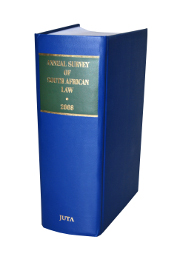Financial Institutions

Financial Institutions
Authors WG Schulze
ISBN: 978 1 48513 300 1
Affiliations: Professor of Banking Law in the University of South Africa, Pretoria
Source: Annual Survey of South African Law, 2014, p. 431 – 469
Abstract
None